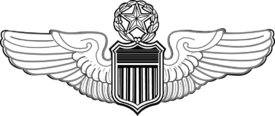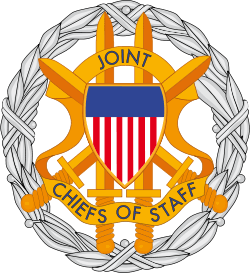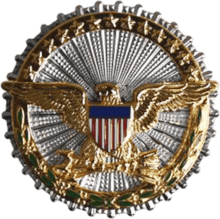Ronald Keys
| Ronald Ellis Keys | |
|---|---|
 General (Ret.) Ronald E. Keys | |
| Born | February 3, 1945 |
| Allegiance | United States of America |
| Service/branch | United States Air Force |
| Years of service | 1967-2007 |
| Rank |
|
| Commands held | Air Combat Command, with headquarters at Langley Air Force Base, Virginia, and Air Component Commander for U.S. Joint Forces Command, U.S. Northern Command |
General Ronald Ellis Keys[1] (born February 3) was Commander, Air Combat Command, with headquarters at Langley Air Force Base, Virginia, and Air Component Commander for U.S. Joint Forces Command and U.S. Northern Command.
General Keys was responsible for organizing, training, equipping and maintaining combat-ready forces for rapid deployment and employment while ensuring strategic air defense forces are ready to meet the challenges of peacetime air sovereignty and wartime defense. At the time, ACC operated more than 1,100 aircraft, 25 wings, 15 bases and more than 200 operating locations worldwide with 105,000 active-duty and civilian personnel. When mobilized, the Air National Guard and Air Force Reserve contributed more than 800 aircraft and 75,000 people to Air Combat Command.
As the Combat Air Forces lead agent, ACC develops strategy, doctrine, concepts, tactics and procedures for air and space power employment. The command provides conventional, nuclear and information warfare forces to all unified commands to ensure air, space and information superiority for warfighters and national decision-makers. ACC can also be called upon to assist national agencies with intelligence, surveillance and crisis response capabilities.
General Keys, a distinguished graduate of Kansas State University's ROTC program, was commissioned in 1967 and was an outstanding graduate of undergraduate pilot training. He has commanded a fighter squadron, the U.S. Air Force Fighter Weapons School, an F-15 wing, an A/OA-10 and F-16 wing, the Combat Air Forces Operational Test and Evaluation Wing, a numbered air force, and Allied Air Forces Southern Europe.
Additionally, General Keys was the first commander of the Air Force Doctrine Center, and he has served as an executive assistant to the Air Force Chief of Staff and to an Assistant Secretary of Defense. Prior to his current assignment, he was Deputy Chief of Staff for Air and Space Operations, Headquarters U.S. Air Force, Washington, D.C.
In 2002, Keys was Chairman of the Joint Chiefs of Staff Richard B. Myers' choice to succeed Lieutenant General Gregory S. Newbold as director of operations (J-3) for the Joint Staff. By long-standing tradition, the chairman of the Joint Chiefs had been allowed to select his own top subordinates, but Defense Secretary Donald H. Rumsfeld adopted a sharply different practice of personally interviewing all candidates for three- and four-star rank. Rumsfeld vetoed Keys' appointment after two interviews, forcing Myers to select Lieutenant General Norton A. Schwartz instead. The failure of Keys' nomination was subsequently recounted by senior military officers as an illustration of strained civilian-military relations at the Pentagon under Rumsfeld's leadership.[2]
General Keys is a command pilot with more than 4,000 flying hours, including more than 300 hours of combat time in Southeast Asia.
General Keys retired November 1, 2007.
Education
- 1967 Bachelor's degree in entomology, Kansas State University, Manhattan
- 1971 Squadron Officer School
- 1974 Air Command and Staff College
- 1978 Master's degree in business administration, Golden Gate University, San Francisco, Calif.
- 1988 Air War College, Maxwell AFB, Ala.[1]
Flight information
- Rating: Command pilot
- Flight hours: More than 4,000
- Aircraft flown: A-10, F-4, F-15 Eagle and F-16 Fighting Falcon
Awards and decorations
 |
US Air Force Command Pilot Badge |
 |
Office of the Joint Chiefs of Staff Identification Badge |
 |
Office of the Secretary of Defense Identification Badge |
See also
References
- 1 2 "General Ronald E. Keys".
- ↑ Vernon Loeb and Thomas E. Ricks (October 16, 2012). "Rumsfeld's style, goals strain ties in Pentagon". Washington Post. Retrieved 2010-07-12.
![]() This article incorporates public domain material from the United States Government document "".
This article incorporates public domain material from the United States Government document "".